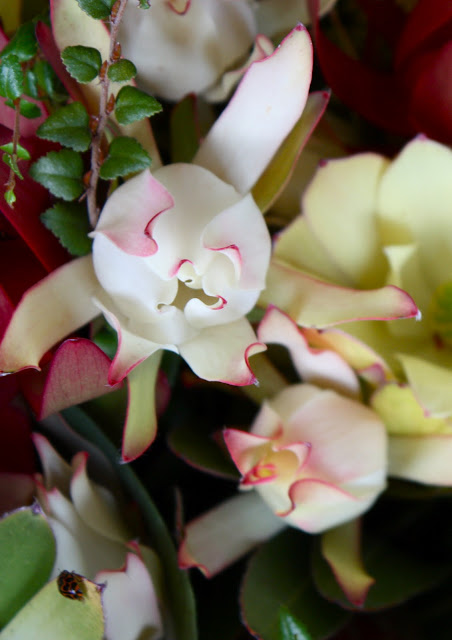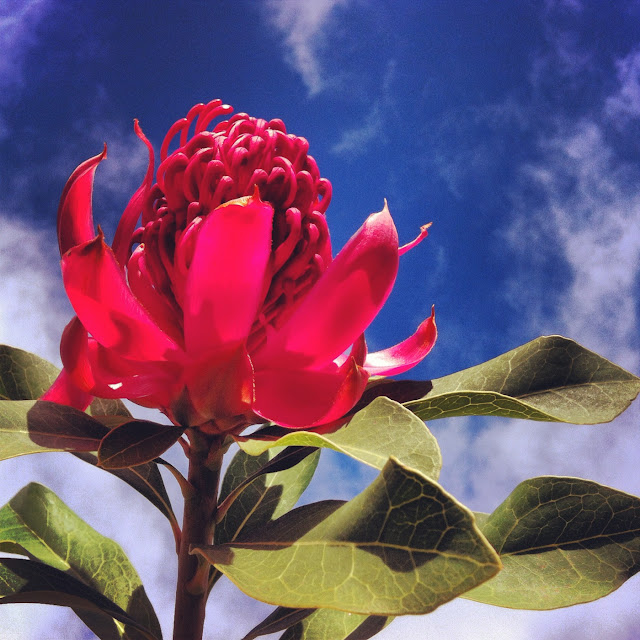Some Leucadendrons are grown not for their flowers but for the cones that appear after the flower. This hybrid Leucadendron Jubilee Crown is one of them. It is often called Christmas Cones because it produces these lovely blushing red cones in December, just in time for Christmas.
The flowers of the Christmas Cone bush are pretty but not really memorable. After the flowers are spent, the centre starts to swell and a cone forms. It swells and as it does, its colour becomes more vibrant until it is round and rosie red and ready for picking. The bush produces lovely straight stems which get longer with good rainfall.
Christmas Cones are fabulous in a Christmas bunch - their colour and texture lend themselves well to seasonal arrangements. They are long lasting too, like most Leucadendrons, and will usually be the freshest looking flower in the bunch, after all the others are spent.
After the cones are spent, they open and dry out, and resemble tiny pinecones. Last years cones remain on the bush. They are generally not sold at this stage, but I think they still look lovely and can be used in floral arrangements even as a "dead" or spent flower.
Leucadendron Jubilee Crown, "Christmas Cones", is not the main event in an arrangement but it is certainly a valuable addition to a Christmas arrangement adding a charming texture and colour.




















































